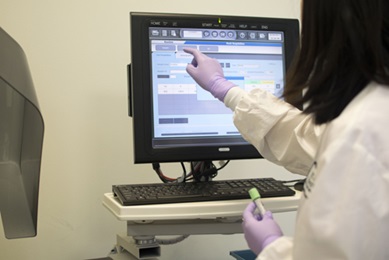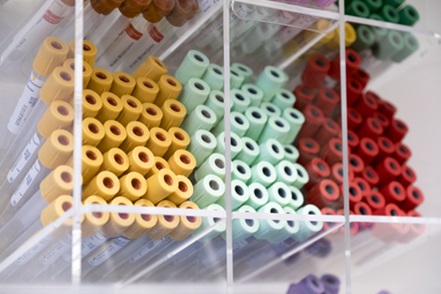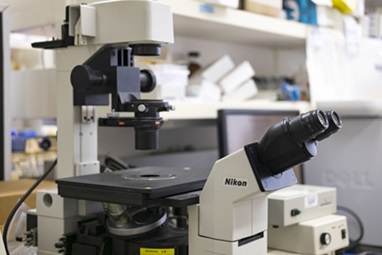When you visit your doctor for a routine physical, the protocol often includes a small blood draw and a urine sample. Why? What tests are run? What can the results indicate?
Using a reputable lab is important, too. If you have a choice of labs, keep in mind that UCI Health has expanded its laboratory locations throughout Orange County and in Long Beach, while the lab at UC Irvine Medical Center in Orange is now open Saturdays.
Routine lab tests, while commonly performed, are less commonly discussed with patients unless there is an issue.
So, with the help of Dr. Regan Chan, a family medicine physician with the UCI Health Medical Group – Orange, here’s a primer to help you better understand these tests.
Note: “Normal” ranges shown here are approximate, since labs tend to have their own definitions.

Common blood count (CBC) with differential
What it is: The CBC is a blood test primarily intended to measure your:
- Red blood cells
- Hemoglobin
- Hematocrit
- White blood cells
- Platelets
Why: This test of the cells in your blood is used to help diagnose and monitor treatment for a large number of conditions. It screens for anemia or other blood disorders and can detect infections.
What’s considered normal:
Red blood cells (RBC):
- Between 4.32 and 5.72 trillion cells/liter for men
- Between 3.90 and 5.03 trillion cells/liter for women
Hemoglobin (Hb):
- Between 135 and 175 grams/liter for men
- Between 120 and 155 grams/liter for women
Hematocrit (Hct):
- Between 38.8 and 50.0 percent for men
- Between 34.9 and 44.5 percent for women
White blood cells (WBC):
- Between 3.5 and 10.5 billion cells/liter
Platelets (Plt):
- Between 150 and 450 billion cells/liter
Reading the results:
- Red blood cells, hemoglobin and hematocrit all play roles in transporting oxygen and carbon dioxide throughout your body. Lower-than-normal counts may indicate anemia. Abnormally high results could point to a condition such as polycythemia vera or heart disease. Corpuscle (cell) sizes and their variations are also examined to provide additional diagnostic clues.
- White blood cells help your body fight illness and infections. A low count may be caused by cancer, an immune disorder, bone marrow issue or simply a reaction to medication. A high count usually indicates an infection or inflammation, though it can be due to many of the same causes as a low count.
- Platelets are important for blood clotting. An abnormally low count may be associated with a disorder such as leukemia or lupus. Excessive levels are fairly rare. Your healthcare provider will order additional tests to diagnose the cause.
- The CBC differential test provides detail about white blood cells – including the size, shape and percentage of each of the five subtypes – to help pinpoint an illness or allergy. The test also visually checks red blood cells for any abnormalities.
Important: A CBC is not a definitive test, so numbers outside of the normal range may or may not require follow-up. Talk with your doctor.

Comprehensive metabolic panel (CMP)
What it is: A CMP uses a blood sample to provide 14 test results, including:
- Glucose (sugar), calcium and protein levels
- Electrolyte and fluid balance (e.g., sodium, potassium)
- Kidney function (blood urea nitrogen and creatinine)
- Liver function (bilirubin and liver enzymes)
Why: This broad screening tool checks the state of your metabolism. It can screen for diseases, monitor existing conditions such as hypertension or determine how medications are affecting your kidney and liver functions.
What’s considered normal:
- Glucose from 70 to 99 mg/dL
- Calcium under 10 mg/dL (for adults 35 or older)
- Protein between 6 and 8.3 g/dL
- Sodium from 135 to 145 mEq/L
- Potassium from 3.5 to 5.0 mEq/L
- Blood urea nitrogen from 6 to 20 mg/dL (for adults 18-60); 8 to 23 mg/dL (for adults 60 or older)
- Creatinine from 0.9 to 1.3 mg/dL (for adult males); 0.6 to 1.1 mg/dL (for adult females)
- Total bilirubin (bile in liver) from 0.3 to 1.9 mg/dL
Reading the results:
CMP test results are typically evaluated together to look for patterns. Abnormal results can be due to a variety of factors, such as:
One abnormal test result can mean something different than multiple out-of-range scores, so they are followed up with additional tests to pinpoint the cause and confirm or rule out a diagnosis.

Lipid panel
What it is:This blood test measures lipids, which are fats and fatty substances used as a source of energy by your body. Measurements include:
- Total cholesterol
- Triglycerides
- High-density lipoprotein (HDL), the so-called “good cholesterol”
- Low-density lipoprotein (LDL), or “bad cholesterol”
You may need to fast for up to 12 hours before this test – follow your doctor's instructions carefully on how to prepare.
Why: This test helps determine your risk of heart disease. An initial screening may check only your total cholesterol level. A full lipid panel, however, is often recommended, especially if you have other risk factors such as:
What’s considered normal:
- Total cholesterol of less than 200 mg/dL
- Triglycerides of less than 150 mg/dL
- An HDL level of 40 to 50 mg/dL for men and 50 to 59 mg/dL for women)
- An LDL level of less than 130 mg/dL; or less than 100 mg/dL for diabetics and those with heart disease
Reading the results:
HDL and LDL cholesterol readings can be confusing, since higher levels of beneficial HDL reduce your cardiovascular risk while higher levels of LDL increase your cardiovascular risk. You should also look at the LDL/HDL ratio, which ideally should be below 5:1.
If your doctor finds a lipid disorder, treatment may be recommended to help lower your blood lipid levels. Your treatment could include medications or lifestyle changes such as diet, weight loss and exercise.

Urinalysis (UA)
What it is: Using a small urine sample, a UA test checks your urine’s content, concentration and appearance. Samples are sent to a lab for microscopic analysis. Sometimes, a “dipstick test” may also be performed to provide immediate, though limited, results based on reactions to a test strip’s color-coded squares.
Why: Results can help detect and monitor treatment for a wide range of conditions, particularly urinary tract infections, kidney disease and diabetes.
What’s considered normal:
- Appearance should generally be pale yellow and clear, though many exceptions are harmless
- While typical pH value is around 6, ranges from 4.5 to 8 are considered normal
- Results should be negative for most elements tested (e.g., glucose, red blood cells)
Reading the results:
Urinalysis may include visual, chemical and microscopic screenings. Findings of atypical substances, such as glucose, nitrites, protein (albumin) or white or red blood cells, may indicate there is a health issue that needs to be addressed.
However, urinalysis test results by themselves provide an incomplete picture. There are many possible interpretations, so findings are always correlated with other test results, symptoms and clinical findings before any diagnosis can be made.

Other common lab tests
Tests requested more on a case-by-case basis include:
- Thyroid panel: This evaluates thyroid gland function. It is often ordered for those with a family history of thyroid issues, women who are pregnant or going through menopause, or anyone who is suffering from chronic fatigue syndrome or a pituitary or endocrine disorder.
- Vitamin D: This is ordered for anyone at risk for a vitamin D deficiency or with absorption issues.
- Prostate specific antigen: The PSA test screens men for prostate cancer. Once commonly ordered, it is now recommended only for men exhibiting enlarged-prostate symptoms because recent studies show the test can lead to unnecessary biopsies.
Those are the basics of lab tests. Armed with this knowledge, you are now ready to be a more thoughtful healthcare customer.
“Patients should always be aware why their physician is ordering a test,” says Chan. “You shouldn’t be afraid to ask about a specific test result,” he adds, “particularly if it’s outside the normal range.”
Related stories



